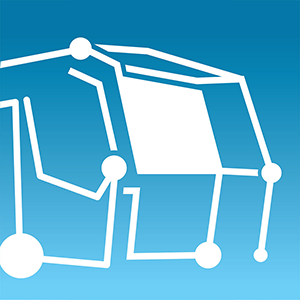
For ballast cleaning at a high-output level using the RM 900 RT, the MFS system was adapted to the requirements in the United Kingdom. One of the prevailing conditions is a very narrow standard clearance gauge. In addition to this, it is necessary to clean the track at night in normal track possessions, to load the spoil, to place the new ballast in layers and to prepare the section of track for traffic.
Especially for this application, an MFS system was developed with one power wagon each for the new material train and the spoil train (in working mode). This power wagon pulls up to 22 MFS units and guides them at a specified distance from the RM 900 RT. For continuous monitoring the machine data of each individual MFS unit of the train are displayed in the cabin of the power supply wagon.
Experience in the field using the BDS in North America, the Baltic States and in Central Europe has already demonstrated the economic savings potential offered by ballast management!
The storage capacity and the field of application of the BDS 2000 can be expanded by adding the MFS 100 and the MFS 100 S. This enables an effective and cost-efficient displacement of large quantities of ballast in the track network. The MFS 100 S incorporates additional ballast chutes for depositing material. In combination with the BDS the entire working area is ballasted uniformly. This specific application raises the output of the track tamping machine and achieves a durable track geometry.
A system was developed for the exchange of ballast and formation rehabilitation in restricted circumstances consisting of two on/off-track MFS 40/4A ZW units in combination with on-track MFS units.
The MFS 40/4A ZW incorporates its own loading conveyor belt with an integrated digger. After the old skeleton track has been removed, the MFS 40/4A ZW drives into the construction gap and this unit is switched over easily from rail chassis to crawler chassis.
The digger removes and loads the old ballast and the old formation material using the MFS 40/4 ZW-B. This passes the excavated material continuously to the first rail-mounted MFS unit.
This guarantees a loading train that ensures continuous evacuation of the material in the axis of the track under repair. This system works well in restricted conditions or in station areas.
The versatility of the MFS units can also be used during turnout relaying to take away excavated material or supply new material.
When larger construction projects are carried out, the MFS is usually loaded in a depot or in a stockyard. To keep the loading process as short as possible, the BLS 2000 loading station is available in on-track design or fitted with a crawler chassis (BLS 2000 R). On the wide conveyor belts, the material can be loaded carefully and uniformly onto the MFS train. With these loading stations, it is also possible to respond quickly to local circumstances. To unload an MFS train, the conveyor belts of the MFS units can be slewed out simultaneously. To extend the range to up to 7.5 m (from centre line of track) the ULS 3000 unloading station can be used.